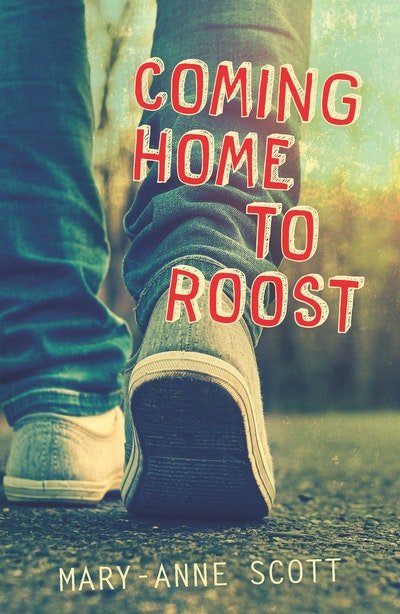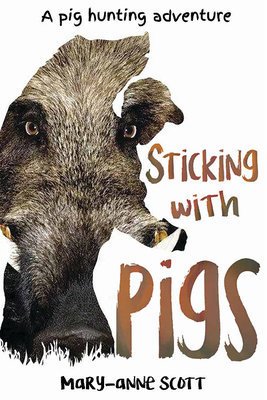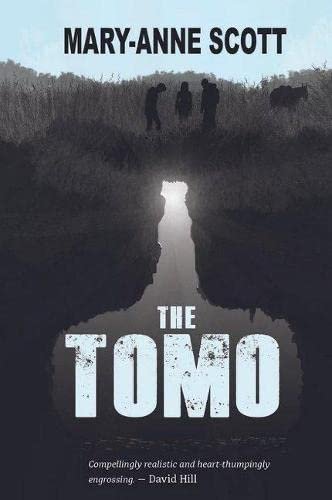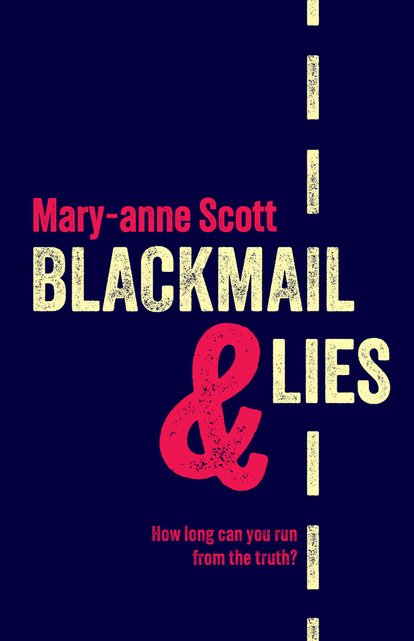






Reviews
-
Reader reviews available on Goodreads.
The Listener Recommendations for YA
This Hawke’s Bay author knows teenage boys so well - musicians, too - enriching the impact of this wake-up call for all who teeter between collecting and hoarding.
Mind boggling & marvellous.
Read the full review here.TK Roxburgh | Email Review
I'm just emailing to say that Mary-Anne's book arrived yesterday and I've just finished it. It was unput-downable. Perfection. Beautiful writing (and, as I said to Mary-Anne, the descriptions of the Baxter house, the school, the night, the second hand shop, so visceral, so visual).I loved all the characters (even Huntley) and loved Jordan - what a great kid. The Mess of Our Lives is one of the best books I've read in a long while (and I've just finished reading all the fiction entries for the Ockhams). I love a book that I can't escape from and I was so invested in the story. As an English teacher, I'd suggest this would make a great text for senior students to study as well. It's a sure bet for the Margaret Mahy book of the year.
Trevor Agnew | Magpie Books
‘Jordan glanced back to check no one was following him. It wasn’t anyone else’s business where he lived.’Right from the beginning we can see that Jordan is an unusual boy. He certainly keeps the location of his home secret, and the reader soon learns why. His mother, Susan, who must be one of the most unlovable characters in New Zealand fiction, is a compulsive hoarder. She is also a recluse with a constant urge to buy from op-shops. Their house is crammed with useless items, infested with cockroaches and mice, but Susan no longer cares for her children’s needs.
Jordan and his sister Tabitha (11) have to fend for themselves.
As the story begins, Tabitha is tired of having to sleep in her mother’s bed. (Jason sleeps in an old caravan which he keeps scrupulously clean.) The pair struggle to move Susan’s stored junk out of a bedroom, so Tabitha can reclaim the set of bunks.
‘Susan had been tossing things in from the bedroom door for years.’
Jordan is worried about his sister’s health and finds his own life at school difficult. Because of his taciturn ways, he is seen as weird and has no friends. His ambition is to leave school, find a job and – one day – return to rescue Tabitha. Meanwhile he struggles from day to day, with only his interest in music to buoy him up.
‘Let’s deal with today, Tabby. Wipe your eyes and put your school face on - there’s no point worrying about next year.’
It’s interesting to see Jordan’s cautious responses and wary reactions when caring adults reach out to him. Ms Frost, the music teacher, is sharp enough to to ask, ‘Is everything okay at home?’
When the kindly second-hand dealers, Andrej and Alena, offer help, ‘Jordan felt a trap closing around him.’ There are sharp hints of his feeling of despair when he sees other people’s homes.
All the characters are convincingly real, even the self-centred Susan. (The lists of her hoarded items become a catalogue of heartbreaks.)
Jordan finds he is revealing his inner feelings in the songs he writes. His musical composition classwork also makes him dependent on his classmate, Huntley, who has plenty of recording equipment. This brings further complications when Huntley proves untrustworthy.
While the theme of this novel may seem gloomy, Jordan’s determination is uplifting and the story becomes enjoyable. As he works out ways to make a better life for himself and Tabitha, Jordan becomes heroic in the true sense. Mary-Anne Scott writes well and offers positive approaches to Susan’s situation.
The conclusion of the story is unsentimental, heart-warming and hopeful.
Christina Sanders Blog
Most teenagers question how they fit in the world, how they fit in their family, judging when is the right time to break out and be themselves, apart. I can see boys getting right into The Mess of our Lives, substituting themselves and their own situations for Jordan’s, hopefully managing to see through the box of their own family life to the wider world, and to grow up making good (though hugely difficult) choices to take them forward.
Read the full review here.Bobs Books Blog
A positive look at mental health and family life when a parent is not well and incapable of change. Social realism is never easy but this is as sympathetic as it gets.Easy to read with short chapters and realistic dialogue. You will love Jordan and Tabitha.
Read the full review here.Adele Broadbent | What Book Next
Mary-Anne Scott writes teenage boys with clarity, compassion and with a clear understanding in how they tick. Jordan is authentic, brave, angry, conflicted and kind. He’s not perfect however, and his struggles just drew me closer to him and his decisions.
The setting of a hoarder’s house is so real, it made me cringe at the cockroaches and screw my nose up at the explicitly described odours of a cramped, mouldy, mouse-stained home.
Trying to understand the hoarder character’s behaviour and mental health problems along with Jordan, pulled me further into the story. I felt his anger and frustrations keenly throughout the novel and held my breath in moments where I would’ve lost my temper too. His self-control is aided by kindness around him in a teacher, a girlfriend and her parents, and a couple who have reached out to him and Tabitha with solutions.
Much research is evident in the police, emergency and mental health services, as each of these organisations are compassionately portrayed in the book.
Sobering, emotional and ultimately hopeful for the character’s futures, The Mess Of Our Lives is a stunning read by a multi-award winning New Zealand author.
Listen to the Radio NZ review with Louise Ward here.
Elizabeth Heritage | The Sapling
Jordan is caught in a heartbreakingly realistic nightmare to which Scott resists the urge to find a happy ever after. Impressively, she manages to give the novel a narratively satisfying ending that nonetheless leaves many important questions unanswered.
Read the full review here.Fleur (13) | Kete Books
Mary-Anne Scott’s latest young adult novel, The Mess of Our Lives, is a poignant story that explores challenging themes including a mother's hoarding and her son’s struggles with anger. It highlights difficult aspects of life through a teenager’s lens and reinforces that we cannot choose our family. The narrative is set in an undisclosed location in Aotearoa.
Read the full review here.
-
Reader reviews available on Goodreads.
Trevor Agnew | Annotation
We’ve all seen the drop. You are not to go down there; you could die down there.The tomo of the title is a cave or shaft. Much of this novel is set on a rugged sheep station where water, acting on the limestone geology has created deep shafts and tunnels, often concealed by vegetation.
Phil Davidson’s parents will have to be in Auckland over Christmas because of his father’s cancer treatment, and they’ve rented-out their Gisborne house for the holidays. Mum has made arrangements for all three of her sons. Skip (17½) will be holding down his father’s job working on McArdle’s farm, Oliver (9) will be staying with Aunt Lily in Gisborne and Phil (15) is going to help Chopper Harris with mustering on a back-country station. Of course nobody is happy with the arrangements. Perhaps that’s why Dad allows Phil to take his beloved header dog, Blue, with him.
The interaction between the three sons is very well drawn, so that the reader can feel sympathy for all of them, even when Oliver is whining or Skip is being brash and bossy. Caught in the middle, Phil always feels off balance and under-estimated. This isn’t helped when he reaches Whakapunāke and finds that Chopper is grimly unwelcoming.
His dial is set high at cranky, comments Kōtuku, the other farm worker.
Chopper is unhappy with both Phil and Blue, although Phil does find some satisfaction in resuscitating the station’s vegetable garden. This, in turn, helps him get on well with Chopper’s lively step-daughter Emara and her mother Penny. Kōtuku, always positive, encourages Phil to believe in himself and his abilities.
Halfway through the story, disaster strikes. Phil has Blue chasing a ram out of some scrub when the dog falls down a deep hole.
The bush shook, and there was a terrible dog cry – a long anguished howl. Then, silence.
Phil’s first impulse is to find some way to rescue Blue if she is still alive, but he soon realises the situation is more complicated than he thought. Can a rescue attempt be organised, when Chopper has forbidden it? Phil gets help and co-operation from unexpected quarters but the descent is a difficult and dangerous venture.
What follows is convincing and vividly described. The ordeal, with its satisfying but realistic conclusion, offers fresh insights into all the characters involved making this a thoroughly satisfying story.
In an Author’s Note at the end of her story, Mary-Anne Scott explains how she knows the area described in the story very well through strong family links. Many current farming and environmental issues are subtly interwoven into the action of the novel. Chopper, for example, tends to see tomo as handy places to dump waste, while Emara is aware that this material will leach into the groundwater. The farming detail is an important part of this story and adds an authentic feel to the events.
For those who doubt that some dogs, like Blue, can have one blue eye and one brown eye, there’s an appealing photo of just such a dog on the back cover.
Sarah Foster | Kete Books
“Mary-anne Scott is close to taking Aotearoa’s crown for best-written young men with this, her fifth book for young adults.The Tomo - named for the naturally-occurring holes in volcanic land - is set at a farm near Gisborne, where Phil has been sent by his family to work for a couple of weeks during Christmas while his mum takes his dad to Wellington for cancer treatment.
Phil is the middle child, with an older brother Skip and a younger brother Oliver. With glasses and a skinny frame, he doesn’t quite have what he considers to be the farmer physique. He doesn’t want to go, so to sweeten the deal his dad puts him in charge of their farm dog Blue. Blue is an unusual dog, with heterochromia and an “expressive face”—she is as much a pet as a working dog.
He gets to the farm and while farm worker Kōtuku is a nice guy, he finds farm boss Chopper gruff and unfriendly. Because Blue responds to verbal commands rather than whistles, Phil is stuck cleaning shearing sheds and grubbing thistles.
He’s miserable but finds sanctuary in the friendship of Chopper’s step-daughter Emara, making the weeks at the farm more appealing.
Phil is a completely real teen—while he occasionally considers his father’s illness early in the book and he worries for his mum when she lets her brave front slip—he is a fairly typical self-absorbed kid. When he gets a message from his mum that his dad is heading home a little early and she wants Blue back, he chooses to ignore it for a day because he doesn’t want to let his mate go.
Each chapter of the book is introduced with a diagram of a knot and the name of the knot. While the knots aren’t an essential part of the story, they act as a symbol of how Phil copes with uncertainty. “You never know, a knot might be the difference between life and death.”
Non-obvious foreshadowing is my favourite type of foreshadowing.
The author’s skill at world-building is also great, making me feel like I was there with Phil all the way. “A smaller path led away from his track and Phil veered left to follow it, noticing immediately that the landscape changed dramatically from the open hills, with Whakapūnake dominating the sky line to an area of thick bush.”
The story recognises the Māori ancestry of the land and the author acknowledges her cultural advisors. Remarkably, the story is based on a true story passed down in Mary-anne’s family. This is significant in context of settler publishing and all of our stories of the land ought to be as respectful.
Another excellent element of the story was the way in which Mary-anne depicts the familial relationships. Skip teases his brother, calling him ‘Smif’, short for ‘small fifteen’ but while they don’t have much in common he is there for him when he needs help.
And he does. On the fateful day of the muster, Blue is sent after a ram—and disappears. Phil immediately finds the tomo she disappeared into and works out how deep it is. While Chopper is ready to give her up, Phil knows he can’t let her go that easily. But he has to draw deeply on his reserves of courage, and work more closely than ever before with Skip, to save her.
Despite some heavy themes, this book would suit readers from age 11 up—great for advanced readers who aren’t ready for the more adult themes that YA books often have.”
-
Reader reviews available on Goodreads.
Trevor Agnew | Annotation
It’s heaps of fun. We’re the pig-hunters of the sea – one-on-one with our prey.This is a novel about young people spear-fishing. Sean Phelps (14) has just arrived in New Zealand from Zimbabwe. Shocked by the sudden death of his father, Sean is finding it hard to adjust to a new school and a new country. He blames his mother.
My school’s a dive, the weather’s disgusting and so are the New Zealand sausages. Everything’s crap, he tells her.
Sean uses his technical skills to help a classmate, Mason, to edit his diving documentary. Sean becomes interested in diving, so Mason begins teaching him the basics of snorkelling and spear-fishing. Sean’s relationship with Mason’s sister, Nicole, is much more complicated because of mutual misunderstanding. Nicole, a keen conservationist, sees a photo of Sean’s father with a dead elephant and assumes he shot it for a trophy. (Actually Sean’s father’s efforts to save a young elephant from poachers had led to his death.)
Coming from a landlocked country, Sean finds the sea exciting and spear-fishing exhilarating.
One breath, one spear, one fish, is the motto of the spearos (spear-fishers).
Nicole is also an enthusiastic diver, so when the annual spearfishing competition puts Sean and Nicole into the same team, their conflict jeopardises their chances of success.
The conclusion of the story has several unexpected twists but also exemplifies the importance of apologies in resolving misunderstandings, especially mutual misunderstandings.
Spearo is a fast-moving story with a lively cast of interesting characters. Above all, it also carries a strong enthusiasm for the joys of spear-fishing. Notes at the end of the book offer more information on diving and spear-fishing.
R Lyell | NZ Book Lovers
Author Mary-Anne Scott really knows how to capture the attention of our younger readers. Spearo is full of action, drama and cracks along at a wicked pace. But it is also full of emotion and her characters aren't afraid to show it.Scott has also nicely worked in a parental conflict that many younger readers will relate to too - a seemingly over-bearing and over-protective mother. Scott understands that lives are complicated and doesn't shy away from making her characters complex and full of realistic tension.
Spearo was a surprisingly good read. I never thought I'd want to read a book about spear fishing. But Scott instantly captured me with familiar landscapes, passion and emotion. A fantastic addition to New Zealand's middle-grade fiction scene.
-
Reader reviews available on Goodreads.
-
Reader reviews available on Goodreads.
B Schaumann | WordPress
This book is a treat for me… I loved this story. I loved the people populating the pages, it feels like New Zealand, it feels just like the stories that students tell me of their lives, it feels homey and perfect and just exactly the kind of story that students need to be reading. They need stories of home. The need to read themselves. They need to have that feeling of home, Mary-Anne has captured the essence of the young NZ male and packaged him up, given him lots of great people he can learn from in his life and made an unpreachy but with good lessons book to read.I’m a total fan of Mary-Anne Scott’s writing and I want her to be recognised as a person who is writing the stories that we need for young blokes. She is the next Fleur Beale, not that Fleur has gone, but she has that touch that Fleur has, she writes for boys and, damn it, boys need books like this.
-
Previously printed as Snakes and Ladders.
Reader reviews available at Goodreads here and here.
Bobs Books Blog
“The subject of school balls and their after parties was going to be the subject of a young adult novel sooner or later and this first novel by Mary-Anne Scott is a good one.
Finn meets and is dominated by the richest girl in school, Mia, and they go to the School Ball and after party. Finn is out of his depth and tragedy strikes at the ball changing lives forever.
Well written with an authentic teenage voice. The banter between the boys is a particular highlight and the issue and after effects of a school ball and after party that goes horribly wrong, will be of strong interest to teenagers.”Tierney Reardon | The Reader - Booksellers New Zealand Blog
Readers will be impressed by the believable characters that carry out the story of Snakes and Ladders; they each seem so unique yet so easy to imagine. Finn, Mia, Eddie and all the others are the sort of characters that readers will root for, despise, pity and love.Snakes and Ladders is written with a subtle but clever sense of humour.
Read the full review here.Trevor Agnew | Annotation
You had no time for your father before the hit and run. Something’s changed with you since that night.
This coming-of-age novel handles a difficult and unusual subject well: the accepting of responsibility. Finn is a 16-year-old, two of whose grandparents have combined forces to persuade his mother to send him to an exclusive Auckland boarding school for his last two years of high school. Finn prefers life in Waimea, where he has friends like Preston and Alison. When, however, his semi-estranged father, aging rock musician Duggie “the druggie”, is accused of a hit and run killing, Finn agrees that it might be better to go North and keep clear of the unpleasant publicity.
At his new school Finn never feels comfortable but soon makes friends, joining Andy in Sevens rugby and playing clarinet with Mia in the orchestra. The student who stands out is the feckless Hobbsie, known as the Hobbit, a stocky, bandy lad with an engaging sense of humour. Finn also makes enemies. Eddie, the belligerent head boy of Henley House, is aware of Finn’s guilty secret and is using it to back up his demands. Their skirmishes (which are wittily described) land Finn in trouble with the school authorities but he is more interested in his relationship with Mia.
These strands intertwine at a school ball and a (forbidden) after-ball swimming pool party, where a shocking tragedy forces Finn to re-evaluate his life and his actions.
Throughout the novel, we have followed Finn’s viewpoint and have been sympathetic to his concerns—even when he’s ashamed of his own mother. At this point of crisis, however, we realise that Finn has been concealing something from us, and this makes his next decision both surprising and impressive to the reader. Without spoiling the (very plausible) plot, it can be said that Finn finally takes responsibility for his own actions.
The characters in this novel are skilfully portrayed and spring to life from the page, particularly Hobbsie, whose class speech on the subject of blackmail is a show-stopper. The result is a gripping novel with characters one cares about.
-
Reader reviews available on Goodreads.
Trevor Agnew | Annotation
If he were still alive Roald Dahl would have been 100 on September 13th 2016, while his Fantastic Mr Fox turned fifty years old in 2020. To celebrate, Lachie’s class is going to perform Fantastic Mr Fox as a play and Lachie is determined to have the role of Mr Fox.I’m the best choice because it’s my favourite story, Lachie declares.
His older brother, Frank, helps Lachie practise for the role, and also creates a handsome tail made from a bottlebrush plant. After auditions, Lachie gets the role but his stubborn refusal to say any of Mr Fox’s romantic lines to Mrs Fox leads to difficulty.
You know I’m not saying stupid soppy stuff, Lachie declares.
Sticking to his convictions, Lachie lets Chad have the role of Mr Fox, while he becomes Mr Bean, the repulsive fox-hating farmer.
There’s nothing soppy to say in Mr Bean’s lines, says Lachie, And I pick my nose.
It is clear to everyone in Lachie’s family that he really would rather be Mr Fox, but Lachie immerses
himself in Bean’s personality, becoming scruffy and rough in his ways.
On the night, the play goes well and Lachie acts the curmudgeonly Bean very well. Then a sinister possibility threatens Areta, the girl who is playing Mrs Fox. Only Lachie spots the danger, and he is brave enough to break character and save Areta from harm.
All thus ends well, especially for Lachie and Roald Dahl fans. This young novel has a lively cast of characters, some gentle humour and a moral.
The graceful line illustrations are by Lisa Allen.
Rebekah Lyell | NZ Book Lovers
Lachie's school is putting on Fantastic Mr Fox by Roald Dahl to celebrate Dahl's 100th birthday. But, as we all know, school plays are notoriously full of surprises and this play is no different.When Lachie's teacher calls for auditions, Lachie is keen to try out for the part of Mr Fox. However, he soon realises that being an actor involves more than just saying the lines, and that sometimes you don't have to be the lead to be the star.
This junior novel by author Mary-anne Scott is a sweet and simple story about a young boy doing the right thing by his peers. Scott is a well-known New Zealand writer, who, once again, does a wonderful job in portraying accurate family dynamics and relationships. Lachie and his big brother Frank have a realistic and relatable relationship - there's lots of joking around and teasing, but the boys also collaborate and co-operate, coming together to show resourcefulness and innovation.
Illustrator Lisa Allen adds her little touches throughout the book. It was especially clever to include illustration of items younger readers may not yet be aware of - an epipen and a bottlebrush branch for example - to aid readers.
The length of the book, and Scott's language which is perfectly pitched for the audience, makes this a great transition book for younger readers wanting to move from picture books to fiction books. Scott really understands these types of readers with Fantastic Mr Bean. It is entertaining and easy to read, with a predictable and uncomplicated story line. The linear plot - which grabs the reader's interest - and a central character they can both relate to and admire, sets junior readers up for success.
Fantastic Mr Bean is a great junior fiction novel to help build younger reader's stamina, strengthen their confidence, while allowing them to develop a sense of themselves as readers.
Articles & Interviews
-
Two Havelock North writers have drawn on their own family histories to write books that are now finalists in the 2022 New Zealand Book Awards for Children and Young Adults.
Read it here.
-
How I write: Mary-anne Scott likes to write in the morning when there are no distractions.
Read it here
-
Celebrated children’s writer Joy Watson died on October 4, aged 83. Her daughter Mary-anne Scott writes about their farewells, synchronicity, and life in a big family of books.
Read it here.
-
Hawke's Bay author Mary-anne Scott's latest book, The Tomo, is her best yet. She has crafted her characters so well that by the end of the book I really didn't want to say goodbye to them.
Read it here.
-
Author Mary-anne Scott has just released her latest book, The Tomo, with OneTree House ($24). This novel for young people is based on some old family lore; we asked Mary-anne to tell us more
Read it here.
-
Mary-anne Scott is close to taking Aotearoa’s crown for best-written young men with this, her fifth book for young adults.
Read it here.
-
The Mess of Our Lives Audio Interview with Morrin Rout.
Also available on Apple Podcasts:
-
-
Amy James hosts Young Adult Wardini Book Club, featuring The Mess of Our Lives (from approx. 16mins). Listen to the discussion here.
